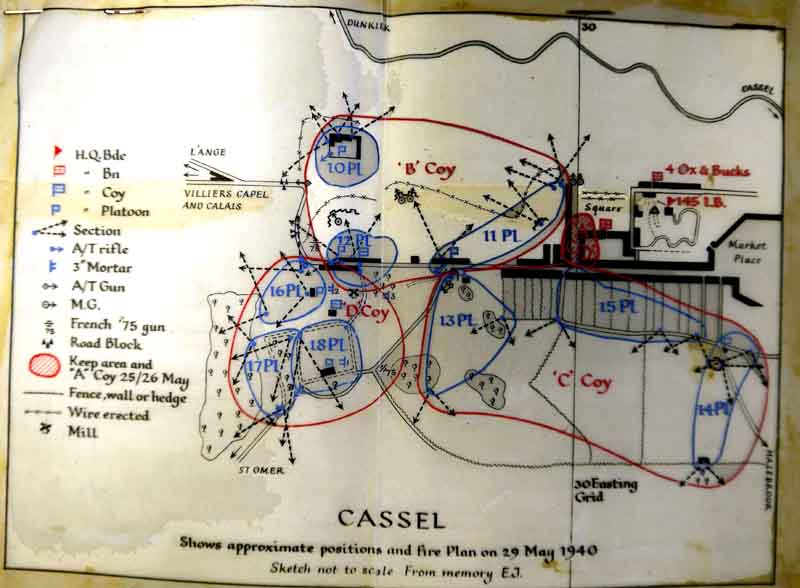
Sadly, despite the anti-tank defence of Cassel having been entrusted to 209 Battery by Brig. The Hon. N.N. Somerset (Commander 145 Bgde.), there is no mention of them in the diary of Lieut. Colonel E. M. B. Gilmore (Commander 61st Division), D.S.O or the very extensive diary of Capt. E Jones of 2nd Glosters.
A letter from Brig. the Hon. N. F. Somerset to the Editor of the Daily Telegraph in February 1948.
An article by Lieut.-Colonel E. M. B. Gilmore, D.S.O. in 'The Back Badge'
An extract from 'The Queen's Own Worcestershire Hussars 1922 - 1956 by D.R. Guttery
Pictures from Cassel
Links to other sites of interest
At the time I was commanding a brigade group holding a sector from Cassel to Hazebrouck. We were heavily attacked by German armour on May 27. At Cassel the Germans were repulsed with the loss of over 20 tanks. At Hazebrouk our force there was surrounded and did not finally capitulate until the evening of May 28.
Not knowing that the B.E.F. was embarking for the United Kingdom we hourly expected a vigorous counter-attack by British and possibly French troops to restore the situation. We hung on at Cassel until the night of May 29, and then tried to reach the Dunkirk bridgehead.
German operation maps at the time showed Cassel and district still occupied by the enemy, and leaflets were dropped calling on us to surrender, as "your generals are gone"!
I feel it is fair neither to myself nor the troops under my command to let this stand pass from mind, especially as so many gave their lives, and most of the remainder of us spent five years in captivity. Incidentally, by holding on at Cassel we not only deprived the Germans of one of the main roads to Dunkirk, but enabled many British detached units and individuals to reach the bridgehead.
All these facts appear to have utterly escaped the notice of the authorities at the time owing to the indescribable confusion, and I feel that an opportunity has now been afforded me of bringing them to light.
Yours faithfully, N. F. SOMERSET. Heathfield, Sussex
After the general withdrawal of the B.E.F. from the line of the River Scheldt, the 61st found itself for some hours in a village called Normain, some miles south-east of Lille. Here, it was informed, the Battalion would "rest" after the rigours and exertions of the past operations. But, instead of "resting" the unit received orders to proceed by motor transport, during the night of 24th/25th May, to Cassel.
This was probably the first time any member of the Battalion had ever heard of the place. As it happens, it is a site that has been the scene of many battles, figuring in history, right back to the Middle Ages, and no doubt beyond them, into Roman times. It is a small town of about two thousand inhabitants, perched on top of and around a hill which rises some five hundred feet above the surrounding flat plain of French Flanders, an area of country which for miles is as flat and featureless as the palm of one's hand. Immediately to the east and adjoining it by a low neck is a subsidiary hill, not so high and covered with trees and scrub, called Mont Des Recollets.
Cassel is an important local road junction, whence routes lead to Dunkirk (almost due north), Lille (to the south-west), Calais, St. Omer, Hazebrouck and other towns of greater or lesser importance.
The town had its Chateau, its Hotel De Ville, its principal Place and a lesser one known as La Place Dunkirk. (That famous port could be plainly seen from the top of the hill). There were several buildings of obvious historical origin, two or three smaller mansion-type of houses, municipal underground air-raid shelters and the usual dwelling-houses, cottages and shops, lanes, walled gardens to be found in any French town of this nature.
The only other features of tactical note, were a railway running approximately north-east and south-west some two miles away to the west of the town, and some dense forest land away to the south-west.
The Battalion reached Cassel, after a journey of some vicissitude, in the early morning of Saturday, 25th May. Up till this date it had been the regular battalion in the 145th Infantry Brigade T.A. commanded by Brigadier the Hon. N.F. Somerset, C.B.E., D.S.O., M.C. But on arrival at its destination, it was found that one battalion (The Buckinghamshire Regiment) had been diverted to occupy Hazebrouck. From now onward the Battalion was part of a mixed force, still under Brigadier Somerset which included the 4th Oxf. and Bucks L.I., some R.F.A. (18-pdrs.), machine gunners from a T.A. Battalion of the Cheshire Regiment, Brigade A.T. Unit and some French Army elements, mainly A.T. and M.G.; there were also Royal Engineers, Royal Signals and R.A.M.C. personnel. Other units were at some time or another added to or withdrawn from the Force, but such movements were outside the ken of the Battalion.
Cassel had already received some attention from the enemy, in the form of a certain amount of bombing from the air. Beyond this, the military situation was extremely vague. Reports had been received earlier of isolated German tanks having broken through ahead of the main enemy thrusts farther inland, and now at large on the coast or in the vicinity of Cassel and its neighbourhood but nothing was known to have occurred which would eventually lead to the evacuation of Dunkirk.
To some extent the first two days at Cassel (25th and 26th May) were ones of rest. It is true that this period was mainly occupied in constructing defences and preparing for eventualities. But at least it was possible to have proper nights' rests, comfortable and sufficient meals and opportunity to reorganise. The Battalion had been feeling the effects of battle, both in the casualties sustained as well as in other directions. Over 130 other ranks were reported missing after the bombing of "A" and "C" and H.Q. companies in the bottle-neck traffic jams at Leuze near Tournai, on 19th May; and since then there had been the casualties arising from the defence of the Scheldt.
The general idea of holding Cassel was to make the place into a tank-proof fortress. Houses and buildings forming a perimeter of the hill were linked up by demolition or digging, and strengthened. Roads and lanes were blocked; and the French M.G. and A.T. weapons and detachments were utilized to assist in the defence. Machine guns, however, were often hampered by lack of good fields of fire; while the 18-pdrs. found themselves limited owing to "elevation" difficulties.
The companies were disposed as follows: the town being divided approximately into two halves by a north-south grid line; the 4th Oxf. and Bucks L.I. holding the east; the 61st, the west sector. The grid line referred to almost coincided with the road from Cassel to Dunkirk, inclusive to the 61st.
Captain H.W. Wilson's Company ("B") linking on its right with the 4th Oxf. and Bucks L.I., stretched along the perimeter to the north-west to join with "D" Company. It faced a rather more open area of country than the others; an isolated farm some four hundred yards out in front of the area was occupied by No. 10 Platoon, under 2/Lieut. R. Weightman. Also in this company area were a party of French and (later) a platoon of the Cheshire Regiment (M.G.).
Next to the left and refused (sic) so as to face west, was Captain A.P. Cholmondeley's Company ("D") with the Battalion Mortar Platoon under command. This company area consisted mainly of residential house of the smaller mansion type, surrounded by a small demesne (land attached to a mansion). The foremost edge of the area was formed by an escarpment, below which was a wooded enclosure. A section of machine guns occupied some cottages on the left, and of two roads which flanked either side of this company, one led to the villages of Zuytpene and Bavinchove. British and French A.T. guns were included.
Round to the south-west and south and completing the Battalion perimeter was Captain E.H. Lynn-Allen's Company ("C"), holding a somewhat more difficult area, whose field of fire was minimised by small walled enclosures on the outskirts of the town.
The reserve consisted of major W.H. Percy-Hardman's company ("A"), the remains of the Carrier Platoon under Sergeant Kibble, the available elements of H.Q. Company under C.S.M. Haberfield, and the A.T. gun section under 2/Lieut. J Robertson, which was used to thicken up generally the anti-tank defence of the whole area.
As usual in these days, the Battalion was very "thin" on the ground.
The Battalion "Keep" and headquarters, with the R.A.P., was in and around the local bank in La Place Dunkirk. The organisation and maintenance here was mainly due to the admirable efforts of Major Colin Campbell (Second-in-Command), Capt. E. Jones (Adjutant), R.S.M. G. Pearce and Lieut. Ian Spencer (M.O.).
Later tactical rearrangements led to a serious alteration in the disposition of the reserve. From "A" Company it was necessary to find two detachments which completely used up this company, as the other companies were too weak to admit of their being called upon.
The first of these alterations was the sending out of No. 8 Platoon under 2/Lieut. R.W. Cresswell to occupy a partially completed blockhouse about two and a half miles out of Cassel on the road to Dunkirk. The second was the sending out of the rest of "A" Company to occupy the village of Zuytpene, on the railway line west of the town. A company of the 4th Oxf. and Bucks was similarly sent out to occupy Bavinchove, also on the railway, south by a mile or two, of Zuytpene. These three forward positions were to break up any enemy onslaught before reaching the main position. 2/Lieut. Cresswell moved out on the afternoon of the 26th, Major Percy-Hardman during the early morning darkness of 27th.

The enemy was first met on the 26th, when two patrol actions between enemy tanks and carriers with A.T. guns occurred in the wooded area to the south-west. The enemy main effort began during the early morning of the 27th, when he attacked simultaneously from the west, south and south-east, using infantry supported by machine guns, mortars and tanks, with occasional assistance from the air, in which he had complete superiority.
The Germans were also helped by obvious "Fifth Column" activities in Cassel itself. It was remarkable how Unit and Company Headquarters were perpetually singled out for accurate mortaring. It was extremely hard to contend with the local inhabitants, who, in spite of a proclamation by the Brigadier ordering all civilians to leave, continued to hang about the place, either through a reluctance to abandon their homes or with set purpose of assisting the Germans.
On this particular day the main enemy point of attack was aimed at the south-east part of the defences, nearer the neck linking up with Mont Des Recollets. But at the same time, simultaneous attacks were maintained on the other parts, as well as on the villages of Zuytpene and Bavinchove. No. 8 Platoon in the blockhouse eventually came into action about 1800 hrs. that evening.
It may be mentioned here that on no future occasion was contact ever regained with Major Percy-Hardman or 2/Lieut. Cresswell. Both were completely surrounded and cut off by force of circumstances, and both admirably fulfilled their role of holding on to their positions and inflicting the maximum delay and casualties on the enemy in the best traditions of the Service.
Major Percy-Hardmann's detachment held a position at Zuytpene which covered all approaches from the west across the railway to Cassel. It was attacked through the western end of the village at about 0800 hrs., when an aerial bombing, followed up with tanks, opened the proceedings: infantry and mortars supported and by midday the enemy had surrounded the position. The garrison at Bavinchove meanwhile had been driven out, and all attempts by carrier, D.R., runner or patrol, failed to establish contact either way between Cassel and Zuytpene. It was not until about 1900 hrs. that two members of "A" Company (Ptes. Tucker and Bennett) arrived at Battalion Headquarters in an exhausted state and reported that they believed they were the sole survivors, having been sent earlier on by Major Percy-Hardman to try and get through the surrounding Germans.
It was long afterwards learnt that the remnants of "A" Company at Zuytpene were finally forced to give in at 1900 hrs., when their last defensive position at Company Headquarters was in flames and a superior number of the enemy had got close enough to throw grenades into the cellar into which they had finally been driven.
No. 8 Platoon, under 2/Lieut. Cresswell, held out against continuous attacks from the evening of 27th to the late afternoon of 30th, when casualties, a fire in the blockhouse, lack of food and an ominous silence from the main position at Cassel caused them to give in to overwhelming numbers.
"D" Company (Capt. Cholmondley) suffered very heavily in casualties this first day of the attack. At one period, a very tricky situation arose when an enemy tank succeeded in getting a lodgment in the grounds of the Company "Keep". An attempt by a party from "B" Company, consisting of Capt. Wilson, 2/Lieut. Fane, C.S.M. Robinson and Pte. Palmer, to assist "D" Company by a flanking stalk against this tank was nullified by a direct mortar bomb hit on their Boys rifle. Eventually the tank was set on fire by a hit from one of the A.T. guns.
"C" Company, under Capt. Lynn-Allen had a tough but successful time in dealing with hostile tanks, which continuously pressed forward in support of infantry against the company position. It was to Sergt. Collings credit that by himself he put a tank out of action with a Boys rifle.
A final effort to reach "A" Company at Zuytpene in order to make sure if there were any survivors was made during the night of 27th/28th by means of a patrol under 2/Lieut. S. Reeve-Tucker, but by then the enemy was too thick on the ground to enable the patrol to get through.
The evening of 27th was the last occasion that the Quartermaster (Capt. Brasington) was able to get through and bring any rations. As it was he was only able to deliver a half-scale issue and thereafter local resources only were available.
The enemy did not press his attack after darkness had fallen, and though considerable movement both by night and day was noticeable in the surrounding country no attack was made on 28th in any general form, except one on "B" Company in the late afternoon. This was beaten off without much difficulty. The only other incident of note on this day (28th) was an attempt to get a carrier through to No. 8 (?) Platoon at the blockhouse. It was impossible, however, to get beyond the outskirts of the town owing to heavy machine-gun fire which covered the northern approach out of the position.
A tour of the company defences showed considerable casualties in the Battalion but at the same time a very appreciable number of enemy tanks lying derelict in open country, particularly opposite "C" Company - evidence of good shooting with the primitive A.T. weapons of those days.
On Wednesday, 29th May, a heavy and sustained attack broke out again, preceded by a concentrated and accurate mortar bombardment. This was directed against the entire Battalion position. By now a machine-gun platoon had reinforced (?) Company at its junction with the 4th Oxf. and Bucks, and a section of 18-pdrs. from a T.A. Regiment came into action in the Battalion "Keep" area.
"B" Company came in for the brunt of the day's onslaught. No. 10 Platoon in the farm forward of the company area, under the command of 2/Lieut. Weightman was exceptionally heavily bombarded. In the course of this attack, 2/Lieut. Weightman was killed by a direct hit; his loss was one that could be ill-afforded, for he had acted throughout most gallantly and had led his platoon most ably in all the fighting. Although a few men in this platoon were driven out of a portion of the farm by (?) fire, Cpl. Waite hung on with a few men in another portion of the buildings until the situation was restored by Capt. Wilson in person.
Another loss which was seriously felt was one caused by the death of 2/Lieut. Gerry French, the Intelligence Officer, always indefatigable, cheerful, conscientious and willing, who was killed, also, by a mortar bomb, while on a mission to liaise with the artillery.
It was a hard day, well borne, by the whole of the Battalion, but in spite of casualties and ever-diminishing effective manpower, at no time did the enemy gain a foothold anywhere. The Carrier Platoon had more than once, on both the 27th and the (?) to be used to reinforce dangerous points in the perimeter. H.Q. Company had played its part admirably and it is impossible to speak too highly of the Signallers under (?) Bartlet, the stretcher-bearers under Sergt. Tilton, or the Pioneers under (?) Murphy. Weaponless members of the A.T. gun section had been utilised to strengthen the Battalion Reserve.
For some unknown reason, the fighting died down about 1700 hrs. and companies reported that the enemy had withdrawn from their respective fronts. Movement could certainly be seen away to the north, but too far away to engage with fire. By now, Cassel was looking in a very dilapidated state, but, apart from enemy planes which occasionally flew over low, all action ceased.
About this time a warning was received from Force Headquarters that the garrison would withdraw that night and would try and make a rendezvous near the Dunkirk area. The news of the evacuation had been heard on a wireless set and hopes were high of being able to make a "getaway". What was not known then, however, was that this projected withdrawal to Dunkirk should have taken place twenty-four hours earlier, but the tragic delay of an earlier message now rendered this idea impossible of fulfilment, for the enemy had completely severed all approaches to the sea.
The actual withdrawal after dark, in spite of the close contact of the enemy, was carried out successfully, but the exasperating events of the next two days are another story.
The full story of 209 Battery in its stubborn defence of Cassel will never be told, for it remains the personal property of that gallant battery Commander and brilliant young politician, Ronald Cartland. By his death not only the Regiment but this country lost one of its most outstanding young leaders.
Brig. The Hon. N.N. Somerset (Commander 145 Bgde.), had entrusted the Anti-Tank defence to him. 209's twelve 2-pounders, one troop of 25-pounders, six French 75's, together with the infantry weapons. On May 27th Lt. Freeker had been despatched with B Troop to the village of Hondeghem, where they had a sharp engagement with enemy tanks. From 8am German infantry could be seen debussing to the west of Cassel. Low-level air attack preceded a tank attack at 10am. C Troop (one gun with four shots) under Lieut. Bob Hutton-Squire, quickly put "paid" to three tanks. By changing gun positions constantly to prepared alternative sites, his Troop avoided casualties and scored further success. The German attack developed on a wide front, but the bitter resistance of the well-sited guns accounted for over 25 enemy tanks during the afternoon. The German attack made some progress towards the road down to Steenvoorde but at 4.30 pm they had had "enough", and the attack petered out. A Echelon, under Sergeant Evans, was dispatched to join B Echelon at Steenvoorde, and both eventually reached Dunkirk.
On May 28 one Troop of 211 with Major Mercer arrived to reinforce the Battery. Mortaring and air attacks continued, but there was no general attack. The visit of the C.O. just after mid-day seemed to confirm the hopes of the ever-optimistic defenders that a British counter-attack might develop. At last, early on May 29, orders to withdraw to Wormhout arrived - 24 hours late! With Cassel surrounded there was no alternative but to destroy guns and vehicles, and, armed only with small arms, the orders were to proceed on foot to Steenvoorde.
The weary garrison filed out of the town as darkness fell. The night was ablaze with battle, and the glare of the Very lights hindered the stealthy figures in their march.
A welcome ally, in the form of early morning mist, afforded some protection, and a surprised German despatch rider was "put in the bag". The mist cleared, and Major Cartland, with Lieuts. Woodward, Hutton-Squire and Freeker, and some 50 other ranks, were suddenly spotted and pinned down by enemy fire in the ditches bordering a lane about 20 miles from Cassel. At about 8am three tanks converged on them. They were cornered and with no anti-tank weapons. As Major Cartland rose from the ditch he was shot instantly. Lieut. Hutton-Squire was some hundred yards away from the head of the column, returning the German fire. When he saw the situation he called to Sergeant Prosser: "They won't capture me," as he ran off into a small plantation, chased by a German machine-gunner. A burst of fire told of his sad fate.
Very few of this garrison succeeded in reaching the beaches. This was a sadly gallant end to a great fight which had proved of inestimable value to the British Expeditionary Force. For the last, most critical days of the retreat, the five important roads of which Cassel was the centre, had been denied to the enemy and secured to its comrades by the courage of this doomed detachment.
Those of the Regiment not killed or captured made their way to the beaches, and their Regimental War Diary reads:
Taken from http://www.mapleleafup.org/forums/archive/index.php/t-9471.html:
Guy Quad FAT gun tractor and 18pdr in Cassel after capture
Destroyed Quad Ant gun tractor in Cassel
Former HQ, Place du General Vandamme
Memorial by the northern gate, before the memorial plaques were moved to the cemetery
Northern gate
Cassel in 1900 - the same buildings can be seen in 2017, but not the electric tram!:
Cassel in 1914 - from the opposite end of Grande Place:
© Copyright 1948 Daily Mail, 1958 D.R. Guttery, 'The Back Badge', Mike Scott
"The order to abandon our equipment came as a great shock to us all. We were furious about it. So we did our best to show our contempt for the Bosch. We collected rifles and anti-tank guns, put on our best clothes, cleaned our buttons and so started the long march to the shore."
Cassel, May 1940
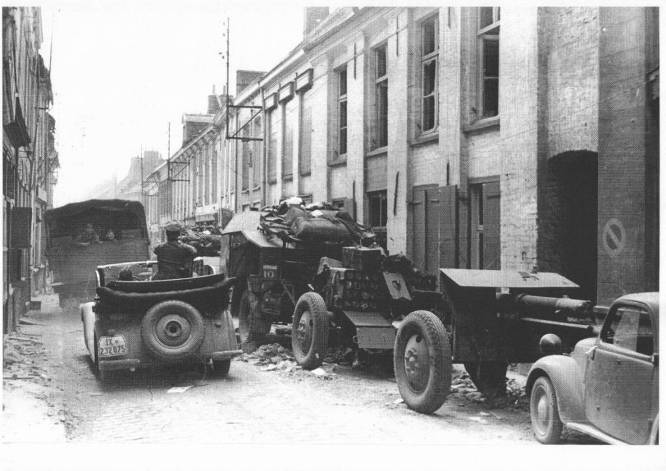
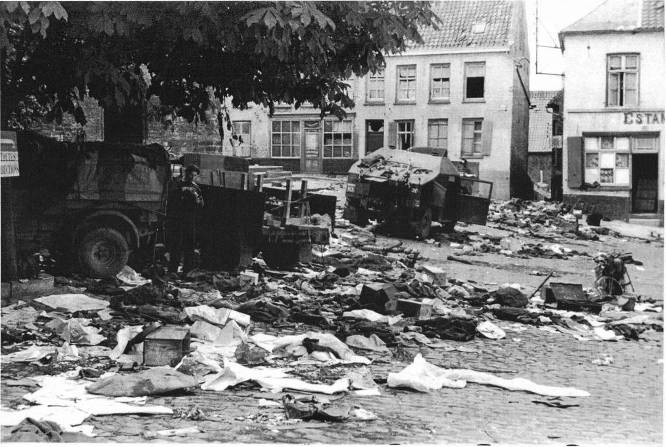
Cassel Grande Place November 2017:
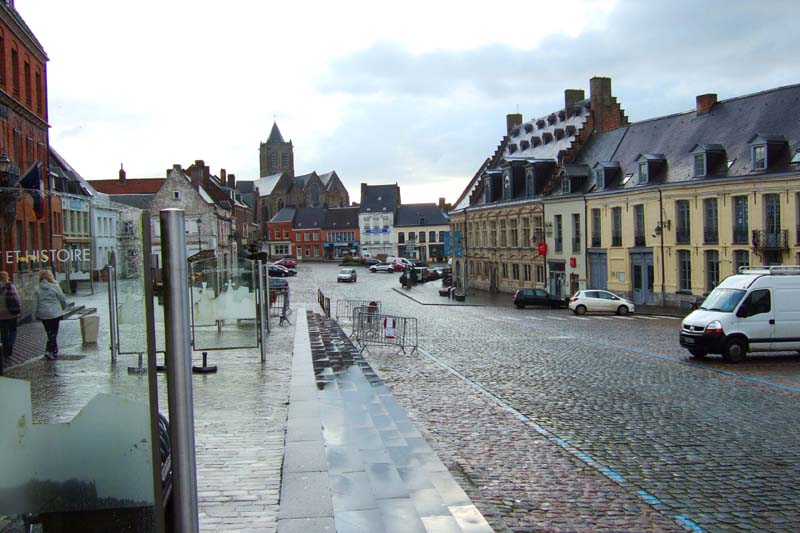
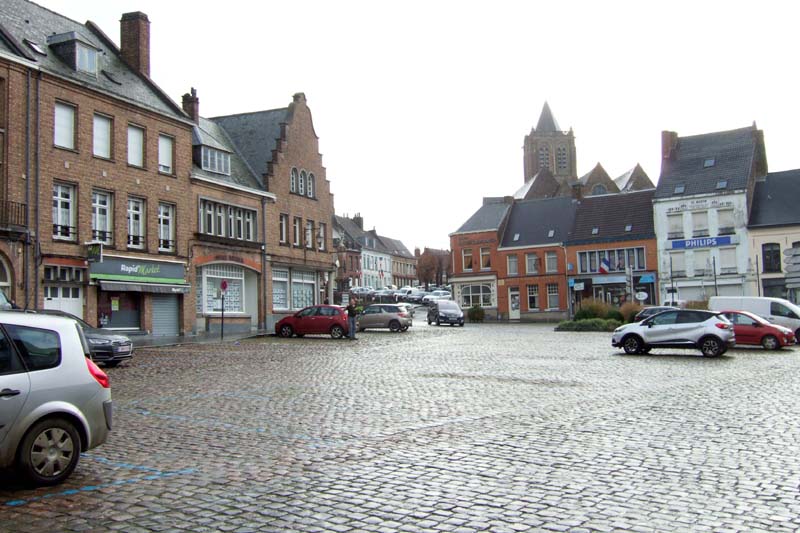
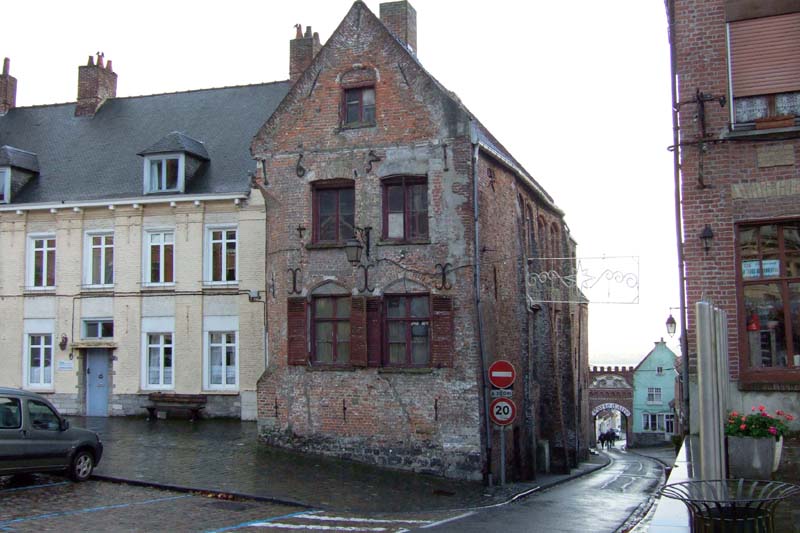
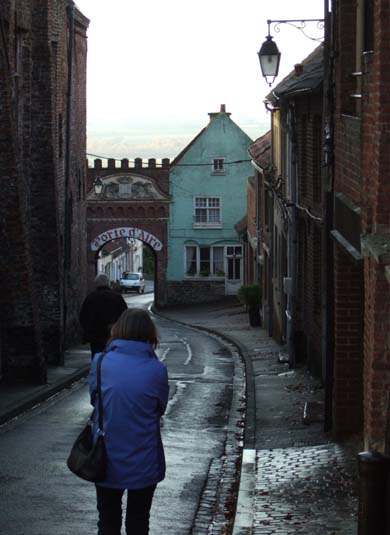
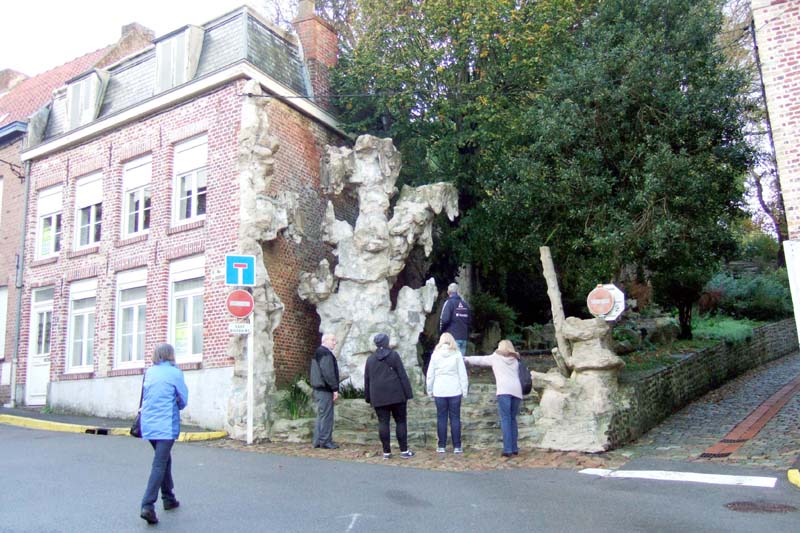
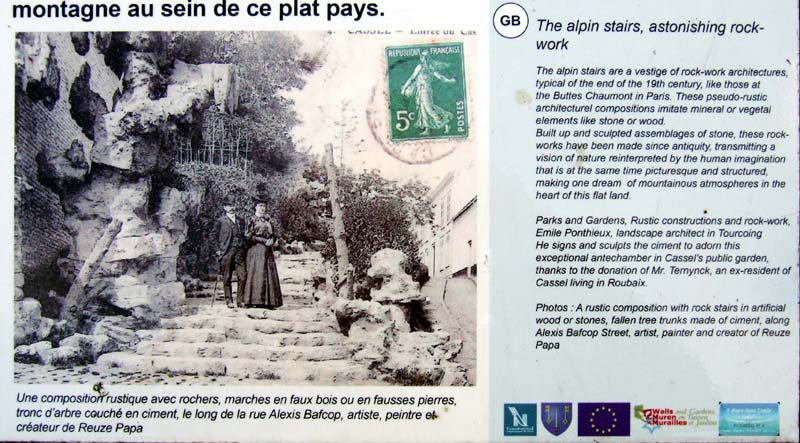
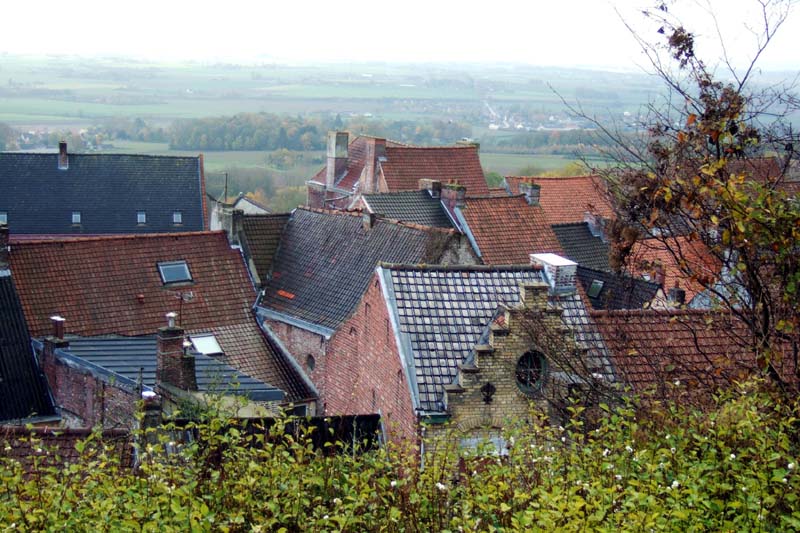
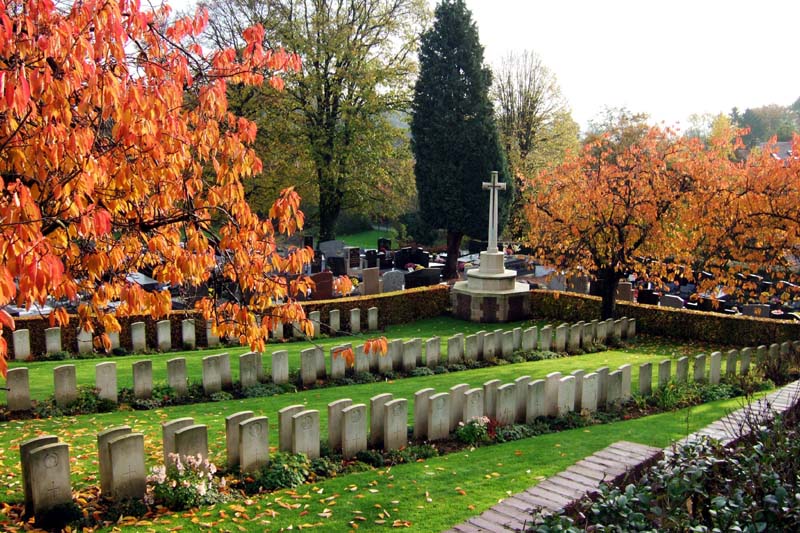
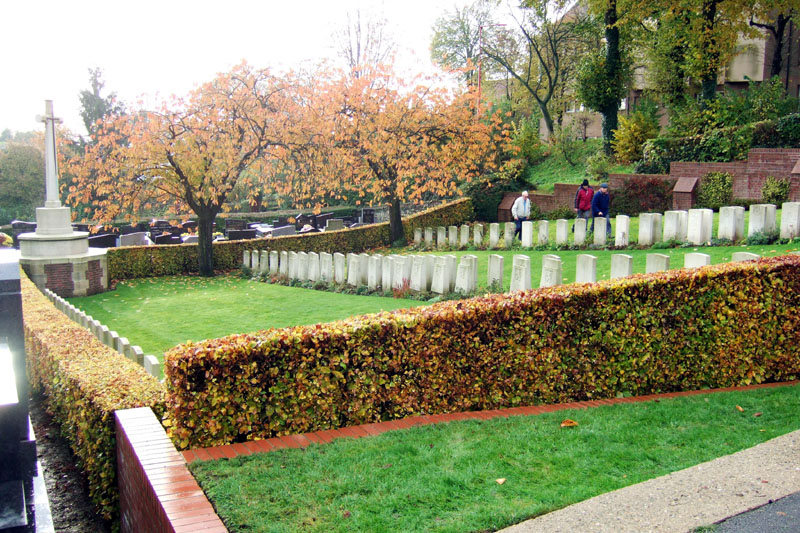
"In proud memory of Brigadier The Honourable N F Somerset CBE, DSO, MC and the 228 officers and men of The 2nd & 5th Battalions, The Gloucestershire Regiment, who fought and died from Waterloo to Cassel and Lederingham covering the evacuation of the British and French forces at Dunkirk"

"Dedicated to the memory of the officers and men of the 4th (TA) Battalion , The Oxfordshire and Buckinghamshire Light Infantry who fought and died from Waterloo to Cassel covering the evacuation of the British and French forces at Dunkirk"
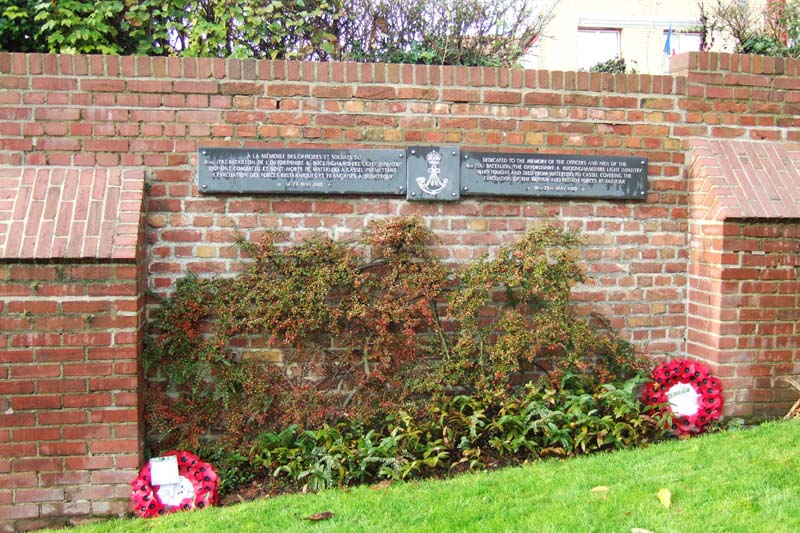
"CASSEL COMMUNAL CEMETERY EXTENSION
"The 94 British, 4 French and 12 other Allied soldiers buried here died in the defence of Cassel, a town occupying a key position at the junction of five important roads. It was the scene of heavy fighting and was held until May 29th 1940."
However I counted 70 British, 12 Czech and one French for May 1940. There were 16 others set apart for 1944 and 45.
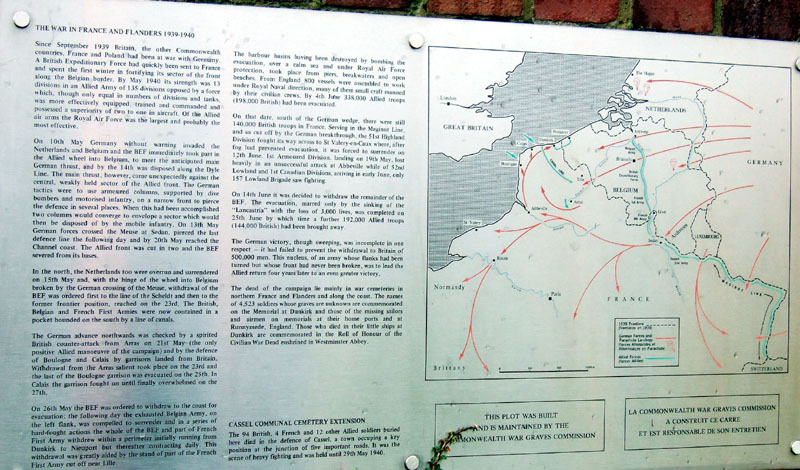
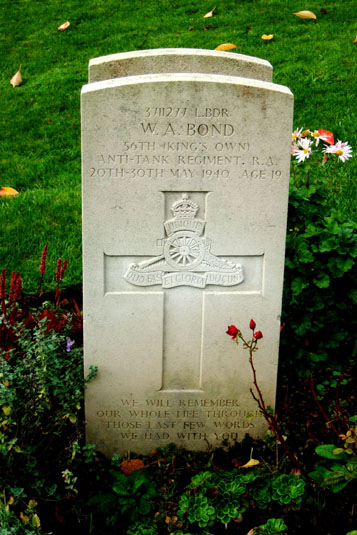
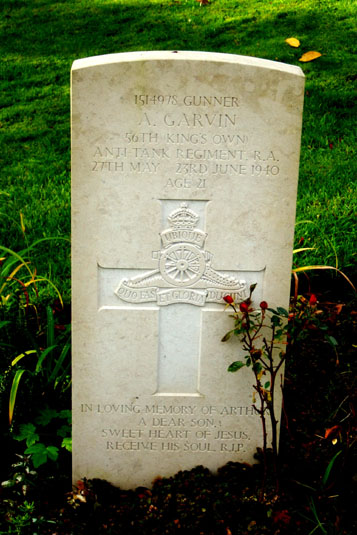
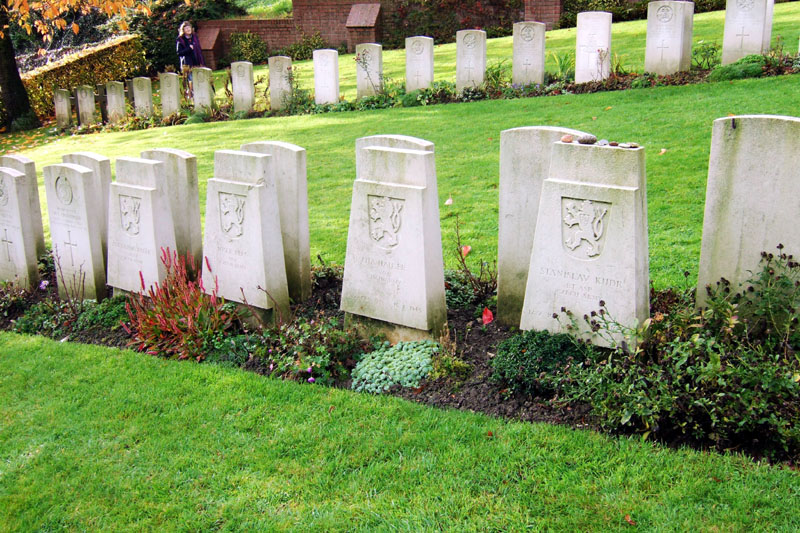
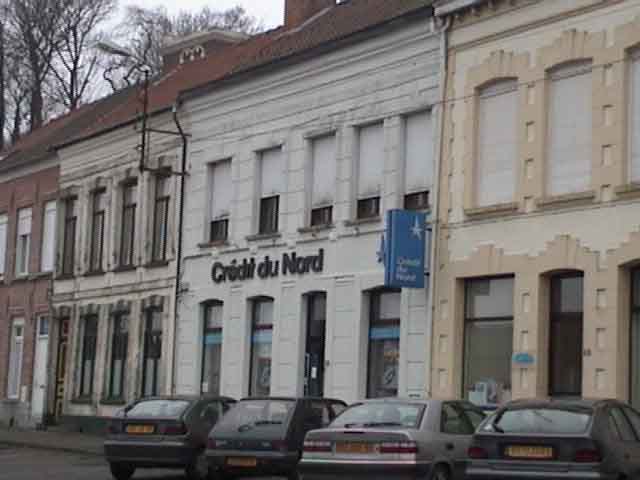
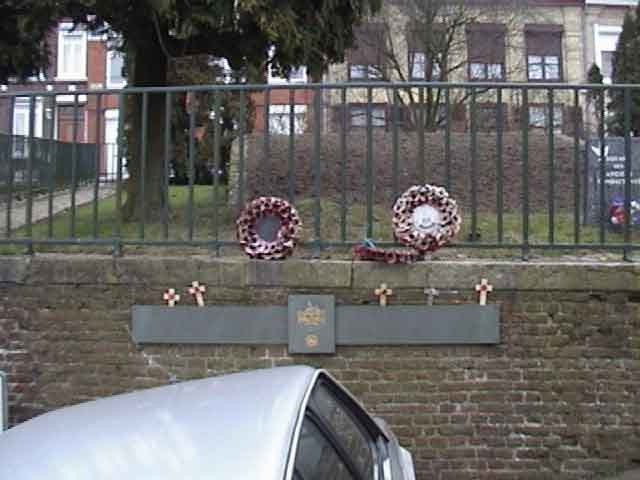
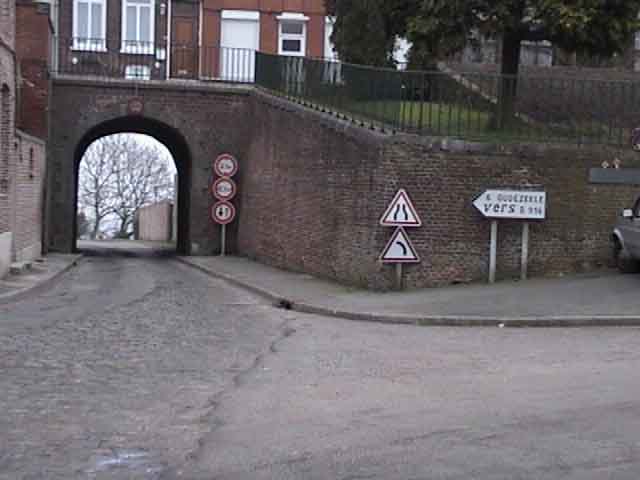
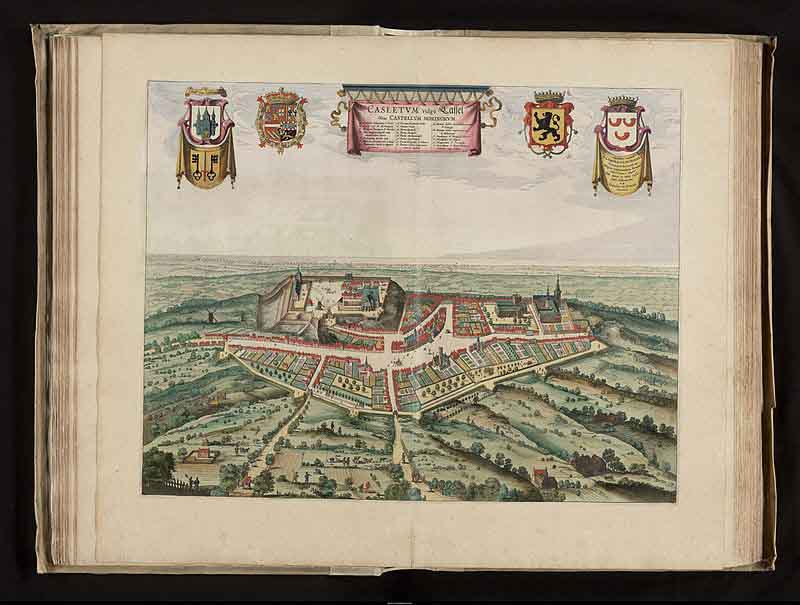
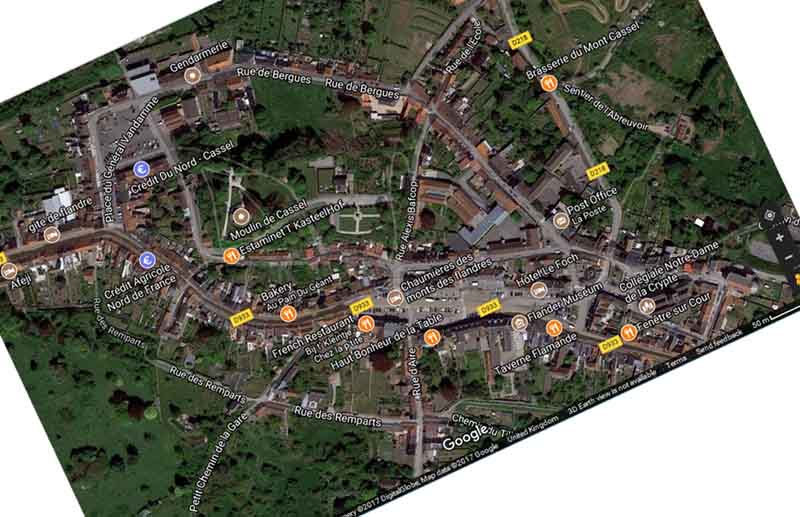
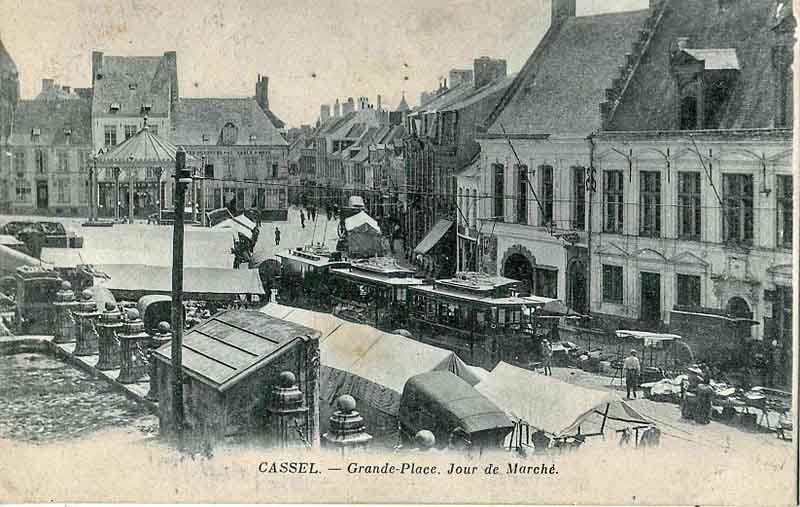
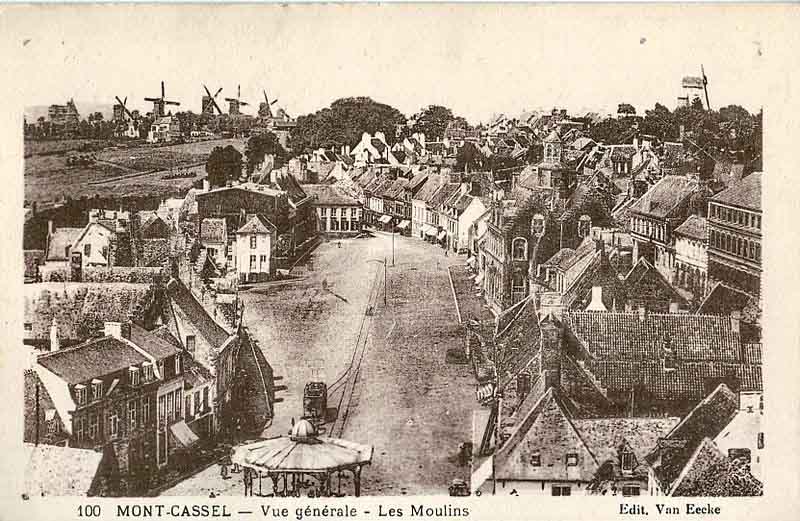
Cassel- The Surrounded Strongpoint from 'Dunkirk 1940'. For some reason that page no longer exists, but there are references to Cassel here Dunkirk - Defence of the Perimeter.
The Ox and Bucks at Cassel